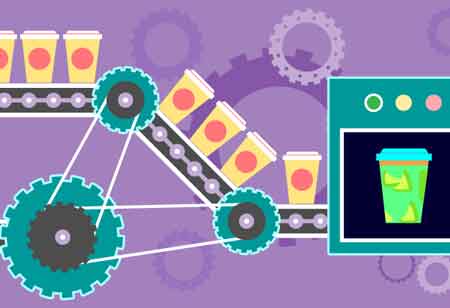THANK YOU FOR SUBSCRIBING
Be first to read the latest tech news, Industry Leader's Insights, and CIO interviews of medium and large enterprises exclusively from Food and Beverage Tech Review
How Can the Incorporation of Machine Vision Improve Food Inspections?
With the machines becoming intelligent with every passing day, every industry will find various new applications and ways to benefit from it.

By
Food and Beverages Tech Review | Friday, February 14, 2020
Stay ahead of the industry with exclusive feature stories on the top companies, expert insights and the latest news delivered straight to your inbox. Subscribe today.
With the machines becoming intelligent with every passing day, every industry will find various new applications and ways to benefit from it.
FREMONT, CA: Machine vision offers tools which can be used to build hardware and software that can observe its surroundings and draw conclusions about the things it sees. This concept is not new, but the current developments back up a wide range of exciting industrial technologies, starting from robots to dramatically improved food inspection process. When we talk about the food industry, considering its numerous moving parts and risk-aversion, machine vision and machine learning are valuable additions to the supply chain.
There are various ways in which machine vision can be applied in the food processing environment, with new variations on the technology cropping up regularly.
Sorting for Large Product Batches
 Automation is a welcome addition to the food and beverage sector, translating into improved worker safety and efficiency and reasonable quality control throughout the enterprise. Machine vision inspection systems can seamlessly become a part of a much greater automation effort. Inspection stations that have machine vision cameras have the ability to scan single products or whole batches of the products to detect flaws. Physically segregating these products must be as efficient as a process as identifying them; therefore, machine vision is an ideal partner to compressed air systems.
Automation is a welcome addition to the food and beverage sector, translating into improved worker safety and efficiency and reasonable quality control throughout the enterprise. Machine vision inspection systems can seamlessly become a part of a much greater automation effort. Inspection stations that have machine vision cameras have the ability to scan single products or whole batches of the products to detect flaws. Physically segregating these products must be as efficient as a process as identifying them; therefore, machine vision is an ideal partner to compressed air systems.
3-D Machine Vision
In order to carry out successful inspections, machine vision systems need optimal lighting. If the area of the scanning environment lies in the shadow, defective products might find their way onto shelves and into customer's homes. Sometimes food products have unique needs when it comes to carrying out visual inspections. Human eyes can't perform a detailed scan of thousands of peas or nuts as they pass over a conveyor belt. The 3-D machine vision provides a tool named "frame grabbing," which can take stills of tens of thousands of tiny, moving products at a time to separate the flaws and perform sorting.
Near-Infrared Cameras
Machine vision has various forms like barcode and OR code readers. A relatively new technology, near-infrared (NIR) cameras, is significantly bettering the usefulness and capabilities of the machine vision. Sometimes the physical damage in the fruits and vegetables does not appear on the outside. NIR technology extends the light spectrum cameras can observe, bestowing them with the ability to detect interior damage before it shows up on the exterior.
See also:
I agree We use cookies on this website to enhance your user experience. By clicking any link on this page you are giving your consent for us to set cookies. More info







